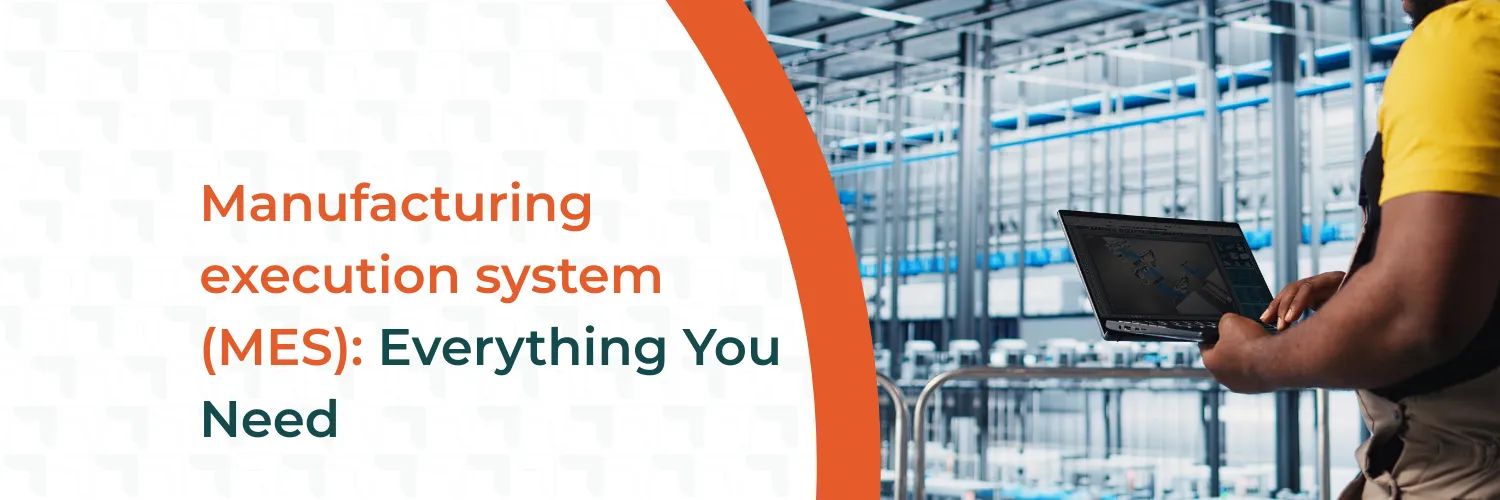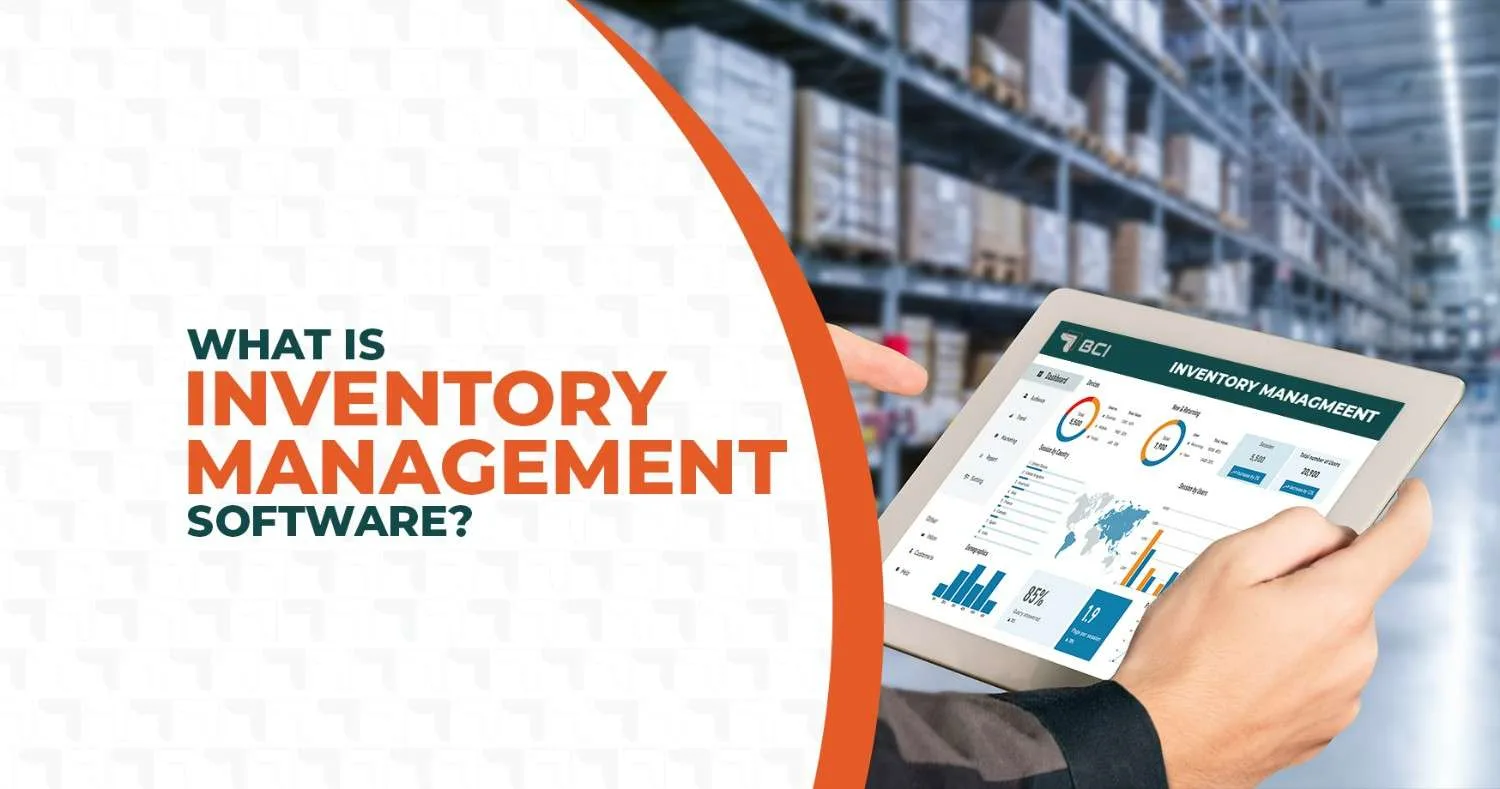
Manufacturing execution system (MES): Everything You Need
An MES is a powerful software solution purpose-built to monitor, control, and optimize production activities on the shop floor. It doesn’t just keep track of what’s happening, it connects the dots between machines, people, materials, and business goals.
Being good at what you do might be enough, but only until you’re trying to scale. Excellence at an individual level doesn’t guarantee performance at an operational one. When you’re aiming to build smarter, faster, leaner manufacturing lines, you need something more than manual oversight or spreadsheets. And that's precisely what a Manufacturing Execution System (MES) offers.
What is a Manufacturing Execution System (MES)?
A Manufacturing Execution System (MES) is the digital equivalent of being the nerve center of modern manufacturing. It’s designed to monitor, track, document, and control every step of the production process, ensuring that everything from raw materials to finished products flows efficiently, accurately, and in sync with business goals.
Manufacturers can see exactly what's happening on the floor, in the moment, by using MES that captures real-time data from machines, operators, and systems. It tracks work orders, machine performance, material usage, labor productivity, and quality parameters, giving decision-makers a single source of truth to act on.
But the manufacturing execution system (MES) solutions don’t work in isolation. It acts as the operational bridge between high-level planning tools like Enterprise Resource Planning (ERP) systems and the granular realities of the shop floor. This two-way communication enables real-time visibility, traceability, and control, all of which are critical for lean, responsive, and compliant manufacturing.
Features of Manufacturing Execution System
Smart manufacturing execution solutions today are driven by tight precision, quick adaptability, and full process transparency. And that’s exactly what a well-implemented MES brings to the table. From real-time tracking to data-driven decision-making, here are some core features that make MES a powerful ally for shop floor excellence:
1- Production Scheduling and Dispatching
An MES helps manufacturers move away from reactive planning by enabling smart, dynamic production scheduling. It takes into account real-time data such as machine availability, work order status, and workforce capacity to assign production tasks more efficiently.
MES makes sure that every job is appropriately prioritised and sent to the appropriate station at the appropriate time, regardless of whether it's a repetitive manufacturing environment or a high-mix, low-volume setup. As a result, there will be fewer constraints, less downtime, and improved resource utilisation.
2- Resource Allocation and Management
Manufacturing relies on the smooth coordination of materials, equipment, and people. A Manufacturing Execution System handles this by intelligently assigning resources according to current demand, stock availability, and machine performance. It eliminates the need for manual tracking and makes it easier to manage operator shifts, machine usage, and tool access.
3- Product Tracking and Genealogy
Traceability plays a key role in strengthening both compliance and competitive advantage. A Manufacturing Execution System offers complete visibility into a product’s journey across the production line. It captures precise details such as the materials used, the machines involved, and the personnel managing each step. When it's time to review quality or respond to an audit, this level of transparency allows for confident and efficient tracking.
4- Performance Analysis
Accurate measurement is a foundation for continuous improvement, and a Manufacturing Execution System supports this with ease. It collects real-time data from sensors, machines, and operator inputs, transforming it into meaningful insights. With MES, manufacturers gain a clear understanding of operational performance through metrics like first-pass yield, throughput, downtime patterns, and overall equipment effectiveness.
Benefits of MES
A Manufacturing Execution System (MES) delivers measurable value across manufacturing operations. This section doubles down on the top five benefits of MES, covering productivity, quality, compliance, cost savings, and real-time visibility to support informed, agile, and optimized manufacturing:
1- Enhanced Production Efficiency
Manufacturing Execution Systems are built to optimize how work flows across the shop floor. By offering real-time monitoring of machines, materials, and labor, MES enables businesses to identify bottlenecks, prevent delays, and keep production moving without unnecessary interruptions. Automated task dispatching and live status updates minimize manual dependencies, helping teams act faster and smarter. This allows businesses to create a scope for shorter production cycles, better resource output, and increased throughput, all of which directly influence their bottom line.
2- Improved Quality Control
With MES, quality isn't just checked, it’s built into the process. The system logs every production step, from raw material intake to final packaging, ensuring that products meet predefined quality standards at every stage. Deviations are flagged in real-time, allowing for instant corrective actions rather than expensive rework or recalls later. This continuous oversight enhances brand trust while keeping warranty claims and compliance failures at bay, saving money and preserving market reputation.
3- Regulatory Compliance
In industries with regulations, documentation is just as important as actual production. MES makes this easier by automatically gathering and keeping audit trails, traceability records, and production data. Whether it's industrial certifications, pharmaceutical batch tracking, or food safety, MES makes sure you're always ready for inspections. Maintaining accurate records lowers the chance of fines for noncompliance and increases operational credibility in international markets.
4- Cost Reduction
MES helps businesses cut down operational waste—be it time, materials, or manpower. It produces a more economical setting by optimising scheduling, reducing errors, and further improving inventory control. These systems continuously analyze production metrics to highlight inefficiencies, enabling proactive adjustments before losses scale. Over time, such insights translate into fewer downtimes, reduced overproduction, optimized machine usage, and lower labor costs, which turn everyday savings into long-term financial gains.
5- Real-Time Data Visibility
Data is only as powerful as it is accessible, and MES brings it to the frontline. Centralised dashboards give managers and supervisors immediate access to real-time production data, providing a thinking window for quicker, more meaningful decisions. Proactive action becomes the rule rather than the exception when it comes to responding to machine problems, redistributing resources, or modifying shift schedules. Across all industries, this responsiveness boosts the edge over others, and to be more precise, it is achieved via customer satisfaction.
Evolution of MES Standards
MES standards are anticipated to change as industrial operations continue to be influenced by digital transformation. With a stronger focus on edge computing, real-time analytics, and data interoperability, we might observe a growing alignment with Industry 4.0 frameworks.
MES and ERP Integration
Smooth factory operations don’t just rely on how well machines run, they also depend on how well systems talk to each other. And that’s what the MES and ERP integration brings to the table. MES handles everything on the shop floor (along with easy integration with the present machine and equipment), which involves real-time tracking, scheduling, and quality checks. On the other hand, ERP oversees planning, finance, procurement, and more. When the two are connected, operations and strategy start moving in sync.
Synergy Between MES and ERP
MES gives real-time visibility and stronger process control at the operational level, while ERP handles high-level planning. When connected, MES sends accurate, validated floor data to ERP, which will help in improving forecasts, speeding up decisions, and aligning execution with strategy. This closes the gap between planning and production, reducing delays and making better use of resources.
Data Flow and Synchronization
The integration allows for automatic data syncing between MES and ERP and it involves production status, inventory updates, work orders, machine usage, and more. Instead of waiting for manual updates or reports, teams get real-time visibility. This fast flow of accurate data leads to quicker decisions, smarter scheduling, and fewer bottlenecks.
Challenges in MES Implementation
A company can gain a lot from implementing a Manufacturing Execution System (MES), but there is a few sets of challenges involved. Understanding these challenges upfront helps create better planning, smoother execution, and long-term success. Let’s see how these challenges affect the workflow and potential solutions that can offset the setback:
Integration with Existing Systems
Making MES integrate easily with existing systems like supply chain, ERP, and quality control software is one of the most prevalent obstacles. Many existing configurations might not be built for real-time data sharing, which could lead to delays, incompatibilities, or even the need for customised connectors. Integrating MES into such environments requires a detailed understanding of system architectures, careful data mapping, and strong coordination between internal IT departments and external vendors. Without this alignment, the risk of operational silos and inconsistent data will increase down the line, undermining the entire purpose of MES.
Cost and Resource Allocation
Implementing MES requires investment in labour, training, hardware updates, and continuous maintenance in addition to software licensing and setup. For small and mid-sized manufacturers, this upfront investment can be daunting. However, when planned strategically, the long-term return via improved efficiency, less rework, and better production control often outweighs the initial spend. However, the right way is to create a thorough execution plan supported by a reasonable budget and schedule.
Change Management
Bringing MES into a factory floor often disrupts old habits, which makes human resistance one of the biggest barriers. Employees used to manual logs or legacy systems may hesitate to adopt new tools, especially if they don’t understand the 'why' behind the change. In some cases, workflows must be overhauled, reporting methods redefined, and day-to-day responsibilities restructured. Overcoming this friction requires more than just training, it involves continuous engagement, clear communication of benefits, and involving employees early in the transition process. A people-first change management strategy ensures not just system adoption, but also long-term success in operational transformation.
Best Practices for Successful MES Implementation
It takes more than just selecting the best software to successfully install a Manufacturing Execution System (MES); it also requires coordinating people, procedures, and technology. To maximise acceptance, reduce disruptions, and realise the full potential of MES across your operations, it is helpful to follow a planned implementation approach. Here are some essential practices that can have a big impact:
Comprehensive Requirements Gathering
Start with clarity. Before any vendor demos or system comparisons, conduct a deep dive assessment of your plant’s workflows, pain points, reporting needs, compliance requirements, and future goals. MES should not just support today’s needs, but scale with tomorrow’s ambitions. A thorough requirements analysis allows you to prioritize the right features, eliminate unnecessary modules, and avoid costly customization later on. This early investment in understanding your operations pays off in long-term system efficiency and ROI.
Stakeholder Involvement
MES impacts a wide range of roles which including shop floor supervisors and production managers, to IT teams and compliance officers. That’s why stakeholder involvement must begin early and continue throughout the implementation cycle. Including their insights during planning, vendor selection, process redesign, and testing not only ensures better alignment but also increases ownership and smoother adoption. When people feel heard, they’re more likely to champion the system, not resist it.
Pilot Testing
Rolling out MES across the entire operation at once is risky. A better approach is to start with a controlled pilot, ideally at a single site or line, where the system can be tested in real-world conditions. This allows teams to evaluate system behavior, identify integration gaps, fine-tune configurations, and gather feedback before scaling up. It’s not just about troubleshooting, it’s about learning. A well-executed pilot sets the foundation for a smoother, organization-wide deployment.
Continuous Training and Support
An MES system is only as good as the people using it. Training shouldn’t stop after go-live. Continuous education, whether through refreshers, digital tutorials, or role-based learning, ensures your teams stay proficient, especially as updates roll out or staff roles evolve. Furthermore, providing help desk assistance and promoting user input maintains acceptance and promptly pinpoints areas for development. Continuous training turns MES from a piece of software into an essential component of your business culture.
Future Trends in MES
In response to changing technological environments, increasing production complexity, and growing sustainability objectives, Manufacturing Execution Systems (MES) are experiencing rapid innovation. Here’s a look at where MES is heading:
Integration with Industry 4.0 Technologies
MES is increasingly aligning itself with the broader ecosystem of Industry 4.0, where technologies like IoT, artificial intelligence, and machine learning are reshaping how production lines operate. Connected machines and smart sensors now feed real-time data into MES, enabling immediate insights into performance, quality, and process deviations. With AI-driven anomaly detection and automated decision support, manufacturers can predict issues before they happen and fine-tune operations with minimal human intervention. As this integration deepens, MES will become more proactive, adaptive, and deeply intertwined with every touchpoint of the manufacturing lifecycle.
Enhanced Data Analytics for Smarter Decisions
The next-gen MES isn’t just about monitoring production, it’s about understanding it deeply. Advancements in data analytics are enabling MES platforms to surpass reactive metrics. In order to avoid unplanned malfunctions, manufacturers can now utilise predictive maintenance, examine energy consumption trends, and pinpoint the underlying reasons for blockages. On the shop floor as well as at the strategic levels of the company, these analytics tools, which are frequently driven by cloud computing and artificial intelligence, support data-driven decision-making.
Supporting Sustainability in Manufacturing
Sustainability is no longer a nice-to-have; it's becoming a core requirement for modern manufacturers. Because they track material usage, energy consumption, waste output, and even carbon footprints in real time, MES platforms are essential to environmental accountability. Without sacrificing efficiency, MES helps businesses find inefficiencies and implement greener practices, such as minimising idle machine time and optimising batch sizes, to meet regulatory requirements and ESG objectives. Over time, these features position MES as an essential enabler of factories that are future-ready and sustainable.
Conclusion
The use of Manufacturing Execution Systems (MES) has become important for operational excellence in a manufacturing environment characterised by speed, accuracy, and flexibility. MES serves as the link between shop floor execution and strategic planning, managing everything from resource allocation to quality control and real-time visibility.
Evaluating current production procedures and finding digital gaps is an essential first step for companies hoping to expand, scale, or just remain competitive. The goal of MES implementation is to change how work is done, and not just to use new technology.
Now's an excellent time to start thinking about the transition. Explore manufacturing execution system (MES) solutions that suit your business or consult with our professionals to learn more about the actual condition of your facility.
Frequently Asked Questions (FAQs)
1. What distinguishes MES from ERP systems?
ERP systems manage organization-wide functions like finance, HR, procurement, and production planning. MES systems focus on the real-time execution of manufacturing processes like tracking production, monitoring equipment, and ensuring quality on the shop floor.
While some ERP platforms include basic manufacturing features, MES offers deeper, real-time operational control. ERP helps plan what and when to produce, while MES ensures it’s done how and where with maximum efficiency. Both are essential, but they serve distinctly different roles.
2. Can MES be customized to fit specific manufacturing processes?
Indeed, the majority of MES platforms have adaptable modules and configurations that may be customised to fit certain product lines, processes, and compliance requirements unique to various manufacturing styles and industries.
3. How does MES contribute to lean manufacturing initiatives?
MES reduces waste by streamlining production, minimizing downtime, and enabling precise resource usage. It supports continuous improvement through real-time insights, helping manufacturers meet lean goals efficiently and consistently.
4. What are the typical timeframes for MES implementation?
Depending on the system's complexity, business size, customisation requirements, and connectivity with current infrastructure such as ERP, SCM, or quality management tools, implementation might take anywhere from 12 to 24 weeks
5. How does MES handle data security and confidentiality?
Modern MES platforms use encryption, role-based access, secure APIs, and compliance with standards like ISO 27001 to ensure data privacy, secure user access, and confidentiality across operations.
6. Is cloud-based MES becoming the industry standard?
Yes, cloud-based MES is becoming more popular because of its scalability, real-time updates, quicker deployment, and reduced upfront expenses. This is especially true for businesses focused on digital transformation and global site coordination.
7. Which industries benefit most from MES implementation?
The automotive, electronics, pharmaceutical, food and beverage, and aerospace sectors all have high MES values because of their complex processes, strict compliance requirements, and need for constant product quality.
8. What is the cost range for implementing an MES?
The cost range depends on factors like the deployment method, customisation, user count, support requirements, and whether the system is on-premises or cloud-based.
9. How does MES support regulatory compliance in manufacturing?
MES provides automated documentation, real-time traceability, and audit-ready reports that help manufacturers meet industry standards like FDA, ISO, or GMP with greater ease and transparency.
10. Can MES integrate with existing legacy systems?
Yes, the majority of MES solutions support connectivity via middleware, APIs, or bespoke connectors; nevertheless, compatibility with real-time data and reliable communication may necessitate extra work for legacy systems.
Get in Touch
Ready to take your business to the next level with BCI (Bar Code India)? We're just a phone call or email away.


